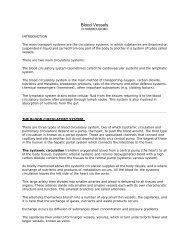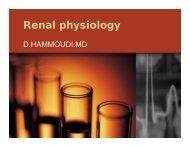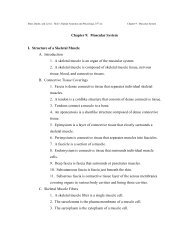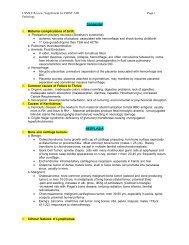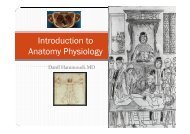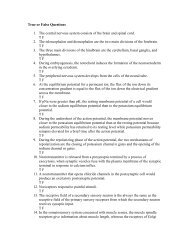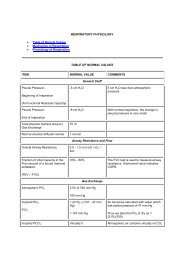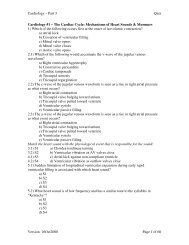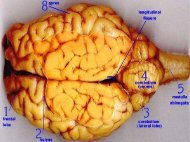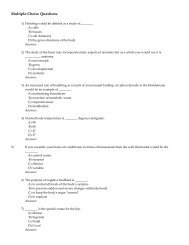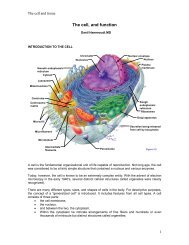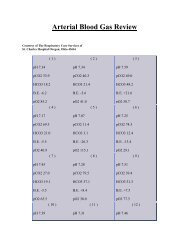L:\usmle review 7 - Sinoe medical homepage.
L:\usmle review 7 - Sinoe medical homepage.
L:\usmle review 7 - Sinoe medical homepage.
Create successful ePaper yourself
Turn your PDF publications into a flip-book with our unique Google optimized e-Paper software.
(A)<br />
(B)<br />
(C)<br />
(D)<br />
(E)<br />
Left atrium<br />
Left ventricle<br />
Pulmonary trunk<br />
Right atrium<br />
Right ventricle<br />
50. The correct answer is A. The left atrium forms most of the posterior wall of the heart. The<br />
esophagus passes immediately posterior to the heart. Enlargement of the left atrium may<br />
compress the esophagus and cause dysphagia.<br />
The left ventricle (choice B) forms most of the left border of the heart and most of the<br />
diaphragmatic surface of the heart. The left ventricle is not related to the esophagus.<br />
The pulmonary trunk (choice C) emerges from the right ventricle on the anterior surface of the<br />
heart. The pulmonary trunk is not related to the esophagus.<br />
The right atrium (choice D) forms the right border of the heart. It is not related to the esophagus.<br />
The right ventricle (choice E) forms most of the anterior wall of the heart and a small portion of<br />
the diaphragmatic surface of the heart. It is not related to the esophagus.<br />
31. A patient presents with cervical lymphadenopathy. Biopsy demonstrates a nodular lymphoma<br />
with follicle formation. This lesion would most likely be associated with which of the following<br />
(A)<br />
(B)<br />
(C)<br />
bcr-c-abl<br />
bcl-2 activation<br />
c-myc activation<br />
(D) t(8, 14)<br />
(E) t(9, 22)



